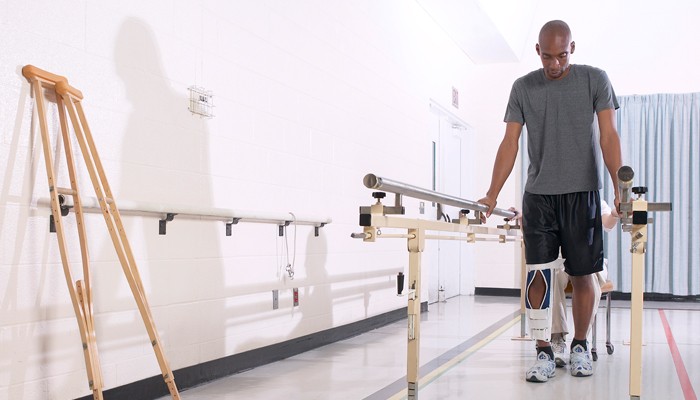What Causes Knee Pain?
Knee pain is a symptom that can be accompanied by decreased ability to move the knee.

There are many different causes of knee pain; however, there are three main types of pain: acute knee pain caused by injury; chronic knee pain caused by wear and tear on the knee over time; and knee pain that’s part of an illness that affects more than just the knees.
Symptoms
In addition to knee pain, symptoms may include tenderness, stiffness, swelling or a decreased ability to move the knee. The location of pain and other symptoms will vary depending on the cause.
- Bursitis can cause pain, swelling or limited range of motion.
- Meniscal, ligament and tendon tears can cause pain, swelling and limited range of motion. You may also hear a “popping” sound or it may feel like your knee is “giving way” or locking.
- Osteoarthritis can cause pain and stiffness, as well as joint swelling, warmth and tenderness. Symptoms differ from person to person and usually develop slowly and appear in middle age or later. The pain typically increases with activity and is relieved by rest.
- Rheumatoid arthritis can cause joint stiffness, especially in the morning and after periods of inactivity, generally lasting longer than one hour, as well as joint pain, tenderness and swelling.
- Runner’s knee causes dull, aching pain under or around the front of the kneecap. It may be felt when walking down steps, sitting with the knees bent for a long time, running, kneeling or squatting.
- Tendinitis can cause pain, swelling and restricted movement of the knee.
Treatment options
Initial treatment decisions are often based on your medical history, current symptoms and physical examination of the knee. Diagnostic tests or procedures should only be done if the results will be helpful in determining your treatment. Unnecessary testing may expose you to unnecessary risks or costs, without benefit.
Conservative treatment. Many people with chronic knee pain may never need knee surgery or a knee replacement, and knee pain can be treated with conservative treatment, such as:
- Activity modification
- Heat/cold applications
- Physical activity/physical therapy
- Weight management
- Medication
Surgery. Conservative treatments should be tried extensively before thinking about surgery. Surgery may be recommended if you continue to have severe symptoms that interfere significantly with your daily life. If surgery isn’t an option, your doctor may recommend treatments such as acupuncture or transcutaneous electrical nerve stimulation (TENS).
Also, joint replacements wear over time and may eventually fail, possibly requiring another replacement surgery. Delaying surgery with conservative treatment can reduce this risk, especially for younger people.
By Optum Contributing Writer
Sources
Centers for Disease Control and Prevention. Arthritis basics: Five key public health messages. Accessed September 26, 2017.
Beutler A, Fields KB. Approach to the adult with knee pain likely of musculoskeletal origin. UpToDate. Accessed November 1, 2017.
National Institute of Arthritis and Musculoskeletal and Skin Diseases. Knee problems. Access September 25, 2017.
National Institute of Arthritis and Musculoskeletal and Skin Diseases. Osteoarthritis. September 26, 2017.
Last Updated: October 19, 2017
